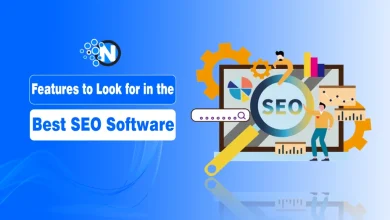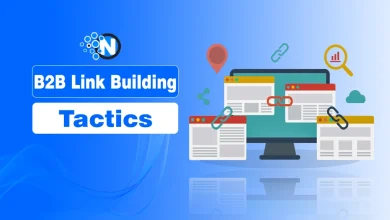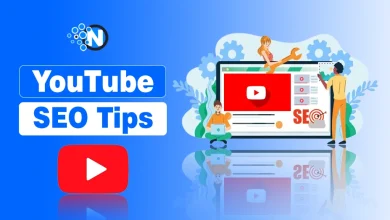How Top SEO Specialists Turn Traffic into Revenue

Getting people to visit your website is only step one. The real challenge is converting those visitors into paying customers who take meaningful actions – buying products, filling out forms, or signing up for services. This conversion ability separates average marketers from industry leaders.
Success in digital marketing isn’t measured by traffic alone but by the quality of that traffic and its conversion potential. This article outlines ten actionable strategies that top SEO professionals use to transform website visitors into revenue. Best of all, you can implement these approaches immediately.
The 10 Strategies for Converting Traffic to Revenue
Some of the best strategies that mostly SEO professionals are using to get the most revenue out of their traffic.

1. Focusing on Intent over Keywords
Ranking for popular keywords isn’t enough – understanding user intent is crucial. Top marketers analyze whether visitors are:
- Comparing options
- Ready to purchase
- Researching information
You deliver value at the right time, increasing engagement and conversion probability, by matching content to the user’s stage in the buying journey. Smart marketers build content pathways that guide users from awareness to consideration to decision stages, creating a seamless journey toward conversion.
2. Following in the Footsteps of Experts
Different businesses require different strategies. Industry leaders develop approaches centered on business outcomes rather than vanity metrics like rankings alone. They:
- Study user behavior patterns
- Make data-driven adjustments
- Focus on revenue-generating activities
One standout practitioner is Brian Ratzker of Data First Digital, whose performance marketing background enables him to leverage data for revenue growth. His integrated approach combines technical SEO, paid media, and analytics for predictable business expansion.
3. Building Content Clusters That Drive Authority and Conversions
Rather than publishing disconnected content, top marketers create comprehensive topic clusters around core subjects. This approach:
- Establishes domain authority with search engines
- Increases time-on-site through related content exploration
- Guides users through a logical information path toward conversion
These content ecosystems not only satisfy search algorithms but also address user questions at every stage of their journey, building the trust necessary for conversion decisions. The enhanced internal linking structure improves site visibility and supports sustained growth.
4. Using CRO and UX Together
Even excellent content fails without proper user experience. Leading marketers integrate conversion rate optimization (CRO) with user experience (UX) to create websites that convert effectively. They test:
- Visual elements and CTAs
- Page layouts and navigation paths
- Site speed and performance factors
Small improvements often yield significant conversion gains. The most successful sites create frictionless experiences where users intuitively understand what actions to take next without feeling manipulated or confused. This harmony between CRO and UX principles should be fundamental to website design, not an afterthought.
5. Using First-Party Data to Guide Strategy
With increasing privacy regulations, first-party data collection has become essential. Top marketers leverage:
- Customer behavior analytics
- Email engagement metrics
- Website interaction patterns
This proprietary data informs targeted strategies based on facts rather than assumptions. First-party data also allows for personalization at scale, creating customized user experiences that significantly outperform generic approaches in both conversion rate and customer lifetime value.
6. Creating Conversion-Optimized Content
Top-performing marketers don’t stop at getting content to rank. They make sure every piece is designed to convert. They incorporate:
- Strategic calls to action
- Supporting visuals and social proof
- Customer testimonials and reviews
SEO specialists also prioritize formatting for readability, using headings, bullet points, and visual breaks to improve content consumption. The best conversion-focused content answers objections before they arise and provides clear next steps that feel like natural progression rather than pushy sales tactics.
7. Investing in Video and Interactive Assets
Modern users expect engaging experiences. Forward-thinking marketers incorporate:
- Explanatory videos
- Interactive calculators and tools
- Quizzes and assessments
These elements increase engagement while demonstrating value more effectively than text alone. Interactive content also provides valuable behavioral data that can inform future optimization efforts while reducing bounce rates and increasing average session duration, key signals that search engines use when determining rankings.
8. Prioritizing E-E-A-T to Build Trust and Drive Sales
People buy from brands they trust. That’s why the smartest professionals focus on E-E-A-T – Experience, Expertise, Authoritativeness, and Trust by,
- Highlighting team credentials and expertise
- Including expert contributions and citations
- Displaying social proof and customer success stories
Transparency elements like author bios, contact information, and current information build credibility. In markets with high-consideration purchases, establishing trust can be the single most important factor in conversion optimization, often outweighing price sensitivity in consumer decision-making.
9. Merging Organic and Paid Search Insights
The integration of paid and organic strategies creates powerful union. Experienced marketers:
- Cross-pollinate insights between channels
- Use paid campaigns to test organic content ideas
- Apply organic learnings to improve ad performance
This unified approach saves resources while maximizing effectiveness. The most sophisticated marketers create feedback loops where paid search validates organic content investments, while organic insights reduce paid acquisition costs over time, creating a virtuous cycle of improvements.
10. Turning SEO Into a Team Sport
Modern SEO success requires cross-functional collaboration. Leading organizations integrate:
- Content creators and copywriters
- UX designers and developers
- Marketing strategists and analysts
This collaborative approach ensures alignment with business objectives and creates holistic strategies. Regular cross-team communication through structured frameworks like agile marketing methodologies ensures that SEO initiatives remain responsive to market changes and business priorities.
Conclusion: Action Drives Growth
Attracting traffic is only the beginning, converting that traffic into revenue requires strategic implementation of proven techniques. The strategies outlined above don’t necessarily require massive budgets or teams, but rather a focused approach to the right priorities: user intent, trustworthiness, design quality, and data utilization.
Start by auditing your current approach against these ten strategies, identifying the most significant gaps, and implementing improvements methodically. Measure results, adjust tactics, and continue optimizing. Remember that conversion optimization is an ongoing process, not a one-time project.
Begin implementing these approaches today and watch your results transform from mere traffic to meaningful revenue growth.




